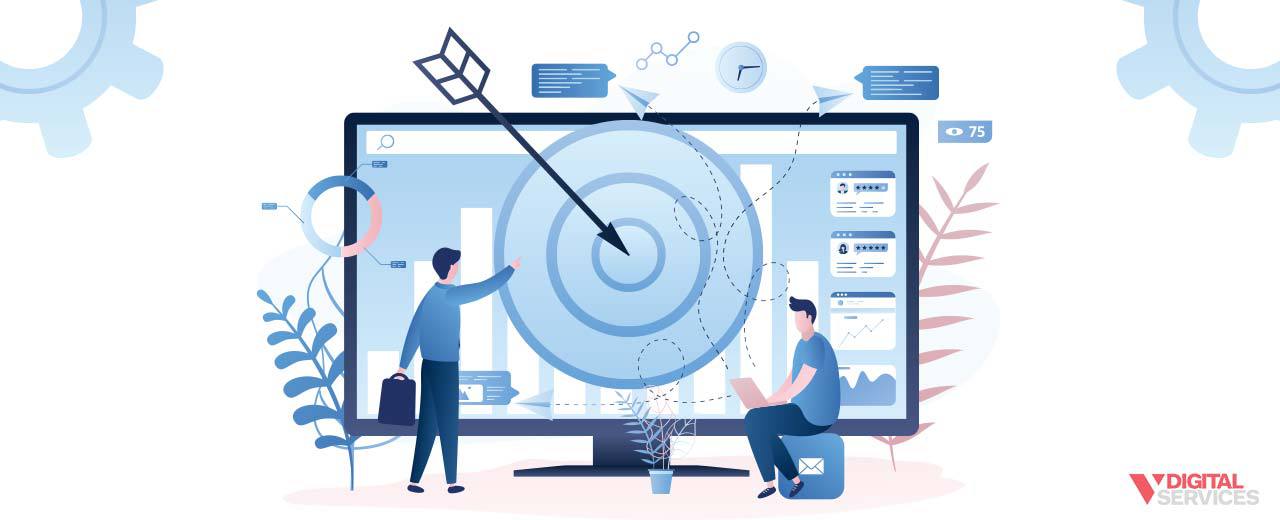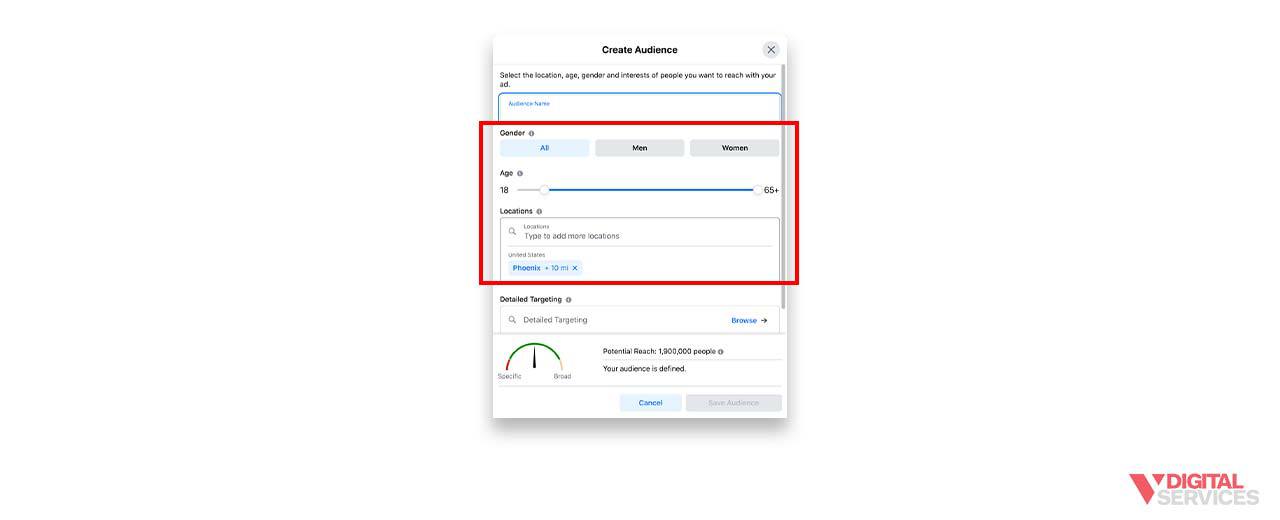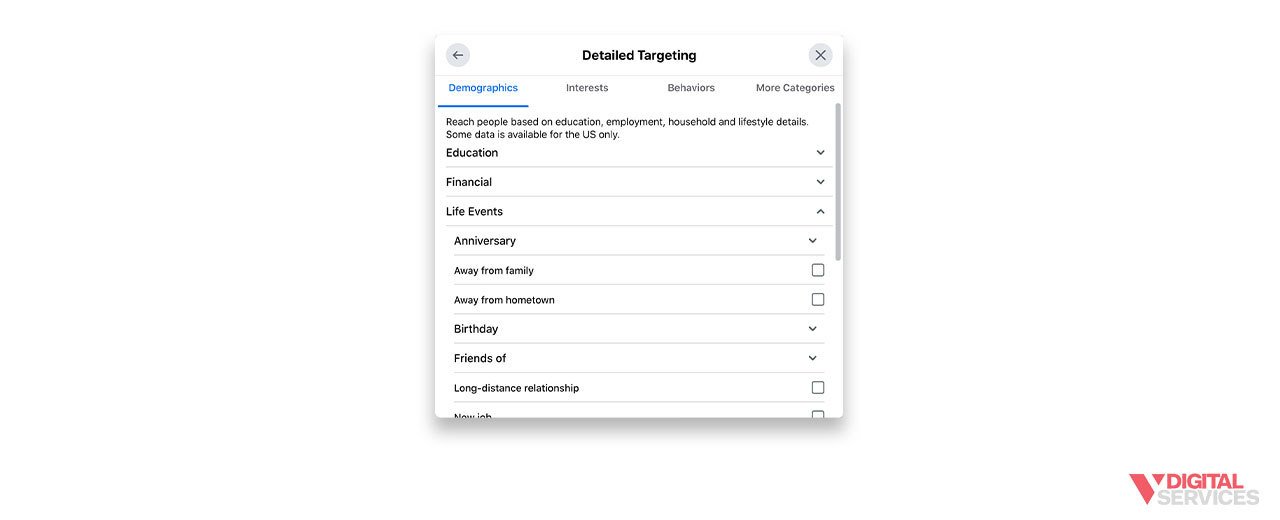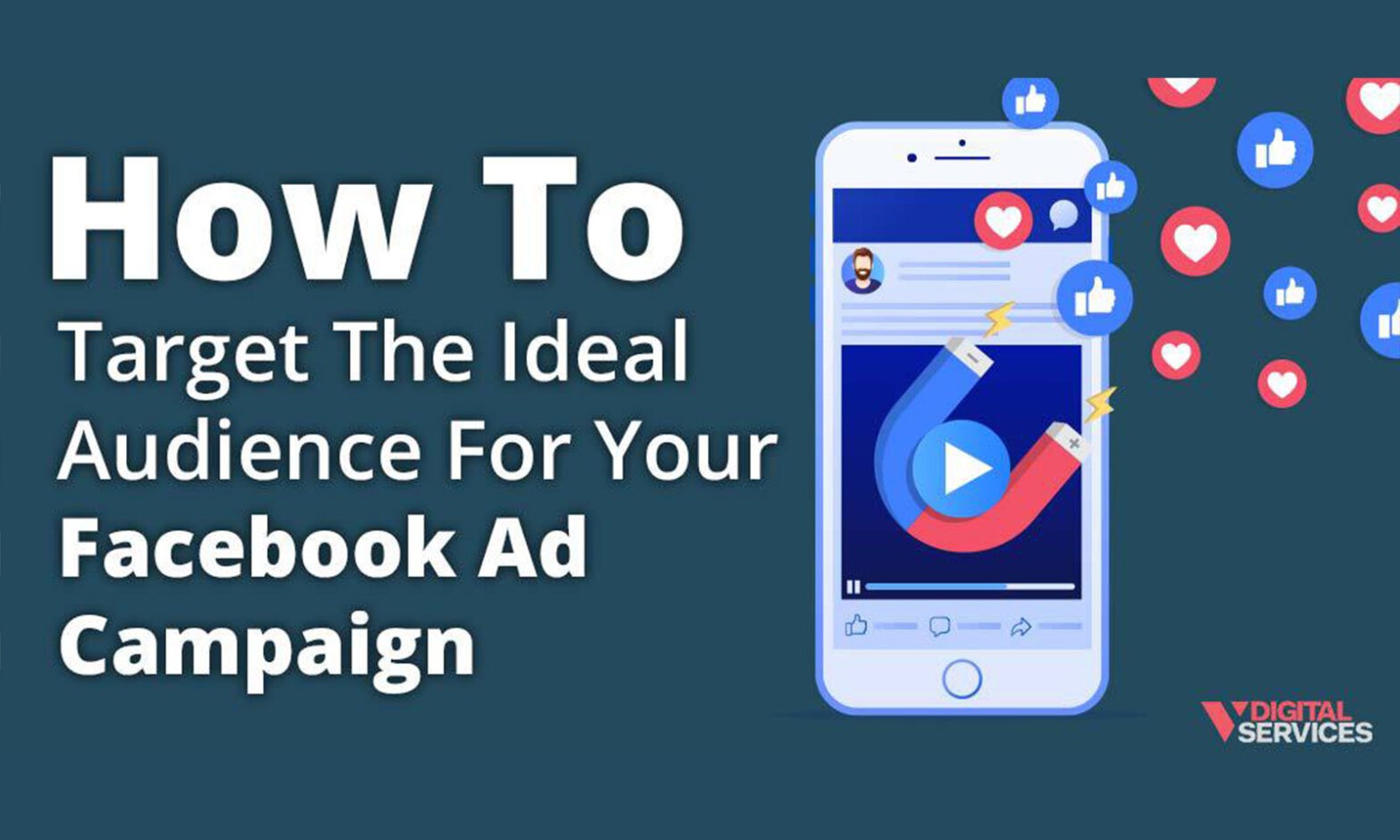Right now, over 200 million businesses are using Facebook and its sister apps for marketing and connecting with customers, and that number is increasing by the minute. And when you consider that about 1.8 billion people (about 66% of Facebook users) are active on the app every day, it’s clear that this social media platform offers a wealth of advertising opportunities.
But with that many people online, how do you reach the right audience for your business? And when it comes down to it, exactly how important is it to plan and implement a targeting strategy for Facebook?
We’re going to answer those questions and many others in this practical guide to Facebook ad targeting. Plus, we’ll outline our top tips for ad targeting strategies on Facebook, so you can learn how to reach the right audience at the right time – say goodbye to missed opportunities and disinterested users because you’ll be ready to get back on track to ad success.
What is Facebook Ad Targeting?
First and foremost, exactly what is ad targeting on Facebook? If you want to understand why it’s important and how to do it, you’re going to need to clearly comprehend what it actually is.
 Ad targeting is the practice of strategically showing your ads specifically to people that will find them most relevant.
Ad targeting is the practice of strategically showing your ads specifically to people that will find them most relevant.
On Facebook, ad targeting is automated to a certain level. Using three key tools, you can also further refine the audiences you want your ads to reach. You can choose:
- Core audiences that are based on your choice of characteristics such as:
- Location
- Age
- Demographics
- Interests
- Consumer behaviors
- Connections
- Custom audiences that have interacted with your brand either online or in-person, including people that are/have been:
- On your contact list or in your CRM system
- App users
- Visitors to your site
- Lookalike audiences that are modeled after your existing customers, replicating criteria such as:
- Age
- Gender
- Interests
- Education level
- Online activity
Essentially, instead of wasting your ad spend on a broad audience that might include a handful of interested users, targeting allows you to get your ads in front of the people who want or need what you can offer them.
Why is Ad Targeting Important?
Understandably, you might want to know the benefits of ad targeting on Facebook before you decide to invest time and effort into a targeting strategy.
As you read above, targeting is key in putting your Facebook ad budget to its best possible use. When you spend money on advertising, you aren’t guaranteed success. In fact, it’s all too easy to virtually pour your money down the drain. Even if your ads are high-quality, they’ll do you no good if the right users aren’t seeing them.
If you have yet to see the results you want from your Facebook ads, a lack of proper targeting could be the culprit. Issues with targeting could involve a few factors:
- You aren’t targeting the right audience for your products or services
- You are targeting the right users, but your message doesn’t align with their position in the sales funnel
- You’re targeting too broad of an audience
- You’re targeting too narrow of an audience
Fix your targeting, and your ads will reach the people you want to do business with… and even better, they’ll be much more likely to want to do business with you.
How to Find Your Target Audience
Facebook demographics set you up with an astounding variety of options for tailoring your ad audience, so the possibilities are basically unlimited. This means that you can get as specific as you need to (and we recommend getting very, very specific). But first, you’ll need to know exactly who your target audience is.
 Hopefully, one of the early stages of your business plan involved pinpointing the “ideal customer” for your brand. Depending on what you’re selling, you’ll generally have a moderately detailed image of the people that will be interested. This basic concept can be translated to Facebook ads, then polished up even more for successful Facebook ad targeting.
Hopefully, one of the early stages of your business plan involved pinpointing the “ideal customer” for your brand. Depending on what you’re selling, you’ll generally have a moderately detailed image of the people that will be interested. This basic concept can be translated to Facebook ads, then polished up even more for successful Facebook ad targeting.
Some simple ways to work on finding your target audience include:
- Utilize Google Analytics to learn about your current customers
- Build a buyer persona
- Assess your website performance
- Engage with both your in-person customers and social media/online audience
- If you already have a social media presence, use tools such as Facebook Insights to learn more about them
Ultimately, you need to be able to describe, with certainty, the online users that you know will be an excellent fit for the products and services you can provide.
Our Top Facebook Ad Targeting Tips
When you’re learning how to target Facebook ads, one of the most important things to keep in mind is that it’s not a “one and done” task. That is, you’ll constantly need to update, refine, and adjust your strategy for Facebook audience targeting. Whether your efforts are based on creating a new ad campaign or improving one based on analytics, the process is ongoing.
For that reason, learning effective ways to target your audience is always going to be time well spent. Even if you already have some basic tactics in place, you might just find some new strategies to boost your ad performance to a new level.
Here are our social media strategists’ best tips for Facebook ad targeting, including a multitude of ways to improve your targeting and see virtually immediate results.
1. Always use basic demographics as your starting point.
When you create a Facebook ad, one of the first things you’ll be asked to do is choose the location, age, and gender of your target audience. If you were to use only these three criteria, you would end up with an audience far too large and broad.
 However, that doesn’t mean that you should skip straight to the advanced targeting options. Age, location, and gender are very general, but they’re important nevertheless. When you set up a new ad, use these three fields as the first step in your audience targeting efforts.
However, that doesn’t mean that you should skip straight to the advanced targeting options. Age, location, and gender are very general, but they’re important nevertheless. When you set up a new ad, use these three fields as the first step in your audience targeting efforts.
2. Utilize interests as criteria for targeting.
The more specific you are with your targeting, the more effective an ad will be. If your target audience is too large, the click-through rate is bound to be low. But when you’re able to zero in on the users that are more likely to be interested in what you have to say and sell, you’ll inevitably earn more clicks.
One of the best ways to narrow down your ad audience is to use interest targeting. Facebook gives you thousands of options for interests to target, and again, specificity is worth its weight in gold.
In the settings for your ad, simply click on the section labeled “Interests.” In the box, type in any interest to see suggestions. You can see a concise description of each interest, as well as the number of people on Facebook that are associated with that interest. As you select multiple interests, you’ll be able to trim the “excess” from the audience and find the ideal intersection point where your best-fit potential customers exist.
Be aware that it’s not enough to select the interests in your ad settings. The ad itself should also clearly connect with the audience you’ve chosen.
3. Look for users that are in the looking-to-buy stage for your products or services.
We probably don’t have to tell you that a significant majority of people spend time researching products online before making a purchase decision. It’s probably something you do yourself!
It’s possible to target the people that have been looking into products/services similar to yours, so you can reach them before they commit to something from a competitor. This can be a particularly successful strategy if you sell high-end or high-cost products and services because consumers are even more likely to spend time researching big purchases.
Here’s how to do it: in Facebook Ads, navigate to the section called “Behaviors.” There is a provided list of suggestions, or you can type in ideas of your own. In “Purchase Behavior,” you can weigh an array of options, so you can really narrow it down. Let’s say you sell custom outdoor pergolas. You can find the audience of users that have been researching custom pergolas, then launch an ad offering a discount on yours – it could be the final push they need to buy one.
4. Target users according to income level.
It might sound a little strange to advertise only to people that earn a certain amount every year, but it’s actually just one of the many ways to meet the needs and wants of your audience.
 For example, if your business sells luxury vehicles, it wouldn’t make much sense to put your ads in front of college students that make less than $30,000 a year. Instead, you would want to aim your marketing at the people with the disposable income to be interested in and purchase a vehicle from you.
For example, if your business sells luxury vehicles, it wouldn’t make much sense to put your ads in front of college students that make less than $30,000 a year. Instead, you would want to aim your marketing at the people with the disposable income to be interested in and purchase a vehicle from you.
In the “Demographics” section of Facebook ads, you can choose from about 30 different financially-related behaviors. Income, Liquid Assets, and Net Worth are just a few of your options. Facebook uses third-party data, plus demographic and other details, to come up with estimations that are as close to accurate as possible.
5. Consider where your ideal customer works.
Are you working on B2B ads on Facebook? Or maybe you have a product that you know will serve individuals within a specific field of work.
If you want to learn how to target business owners on Facebook (or creatives, retail workers, or just about any other professional field), it’s as straightforward as customizing your Facebook ad audience according to “Work.”
You can find this setting under “Demographics,” and you have the ability to search according to industry, job title, or even employer. Like other basic demographic settings, work is usually too broad to give you an appropriately targeted audience. So, get specific with your choices or combine them with several other targeting options.
6. Think about how certain life events connect to your business.
In Facebook Ads, you may have seen “Life Events” as an option for ad targeting. This setting can give you a major advantage, and yet many businesses don’t utilize it.
The “Life Events” targeting option lets you tailor your audience to people experiencing certain life events (or have recently experienced them). You might be surprised at how many choices are available, all built using information that users share about themselves via their Facebook profile, timelines, and other content. Take it one step further and target users within certain intervals of time in relation to the life event (three months, six months, or one year).
 For example, you can find users that are newly engaged and have just bought a new house. If you own a moving service, it would obviously be ideal to connect these users who are preparing to move.
For example, you can find users that are newly engaged and have just bought a new house. If you own a moving service, it would obviously be ideal to connect these users who are preparing to move.
In addition, you can find people that have Facebook Friends that are about to celebrate something. You can develop an audience of people with Facebook Friends that have a birthday in the next month, people with Facebook Friends that have recently moved, and so on. So, if they’re looking for a gift for a specific occasion, you can get to them just at the right time.
7. Target users based on their household.
If we were to ask you to describe the household makeup of your target audience, it might take you a beat – but we’re willing to bet that you’d be able to paint a pretty clear picture of their life at home. Maybe your products and services are designed for families with young children, or perhaps your ideal customers are retirees and empty nesters. Or, perhaps you’ve launched services meant to simplify the lives of people with large, multigenerational families living under the same roof.
 Facebook lets you target users based on factors like parental status, age of children in the home, household composition, and other impressively detailed criteria. Use this ability to your advantage, regardless of what you’re selling.
Facebook lets you target users based on factors like parental status, age of children in the home, household composition, and other impressively detailed criteria. Use this ability to your advantage, regardless of what you’re selling.
8. Figure out your audience’s buyer profile(s).
You already know that you want an audience of users that are ready to make a purchase, but exactly what type of buyer is right for your ad? In the “Behaviors” section, you can select target groups that include coupon users, foodies, shoppers that value eco-friendly products, and more. Facebook puts users into these categories based on their online activities and characteristics.
This is just one of the many places where you’ll really appreciate having a highly detailed picture of your target audience, also known as a buyer persona.
9. Target users according to their device.
Do you think your future customers are accessing Facebook on a smartphone, a tablet, or a desktop computer? Do they use an Android or an Apple device? And does it matter?
Yes, it does matter, and here’s why. Obviously, if you’re selling products specifically designed to appeal to a specific group – like iPhone users – it won’t make sense to advertise to anyone outside that audience. This is generally a common targeting option for businesses that sell apps, device accessories, software, and similar products.
But this seemingly small detail can also help you improve user experience, therefore setting you up for a more successful ad. If you set your audience to mobile users, then you already know that you need to create an ad (and any landing page, website, etc.) that is fully mobile-friendly. Otherwise, even an incredibly engaging ad won’t seal the deal because the user won’t be able to navigate and use your website without feeling frustrated.
10. Layer, layer, layer!
Our final tip is perhaps the most powerful. With Facebook ads, you can layer various targeting options to gradually hone in on an increasingly specific audience. The more you layer, the more effectively you specify who you want to see your ads.
As you carve out extremely specific ad audiences, you can develop the ad creative and special offers to match. In other words, you can set all the odds to be in your favor and present the perfect product in the perfect way to just the right person at the right time.
Here’s what that could look like in action: Let’s say you own an auto insurance company, and you’re planning to run a special that offers discounted insurance for new teen drivers. You could use the household income level, household composition, and various other factors to tailor your audience to the teens (and their parents) who need affordable car insurance right now. Then, the ad you deliver will specifically market the relevant special in a way that appeals to this exact audience.
It’s a win-win: you can make a successful sale or conversion, and the user receives information that caters to their immediate needs.
Do I Need a Social Media Strategist for My Business?
Whether you’re a small, local business or an international corporation, a Facebook account has become a basic necessity. But unlike global organizations, small business owners don’t necessarily have the massive budgets needed to set themselves up with a dedicated, in-house social media team. But even if you own a small business and are working with an even smaller marketing budget, that doesn’t mean that effectively advertising on Facebook is out of reach.
There are certainly a few DIY tactics you can try to get started on your social media marketing strategy. With a little bit of research, clear goals, and a way to track your success, you can absolutely begin to build a solid social media presence for your brand.
However, you might be surprised to learn just how affordable it can be to partner with a professional social media marketing agency. An agency can offer various Facebook ad strategies, supporting you when and where you need it most.
You can often customize your services to suit your specific needs and goals, so it’s possible to find a balance between budget and benefits. And once you factor in the potential payoff you can look forward to – we’re talking increases in conversions, traffic, purchases, profits, and more – it’s one of the smartest business investments you can make.
 Learn How to Master Marketing on Social Media with VDS
Learn How to Master Marketing on Social Media with VDS
V Digital Services has spent years building a foundation of experience in digital marketing, working with a broad range of clients across every industry. We provide a full selection of services to help you connect with your current and future customers, so you can leverage strategic marketing to achieve sustainable business growth. The V Digital Services team has dedicated experts ready to do it all, from social media advertising to SEO, programmatic ads, and more.
Setting up ads on Facebook can really pay off, but you also can’t afford to make missteps when targeting the right audience with quality content. Instead of using your ad spend to experiment with different targeting tactics, why not let us take a data-driven, proven approach to reach your ideal customers online?
If you’d like to know more about how to target customers on Facebook and build successful ad campaigns, reach out to the V Digital Services team today.
Make all outbound links no follow
Featured Images: V3rc4, naum, Jirsak, mnimage, Tang Yan Song, and Rawpixel.com/Shutterstock


 PREVIOUS
PREVIOUS